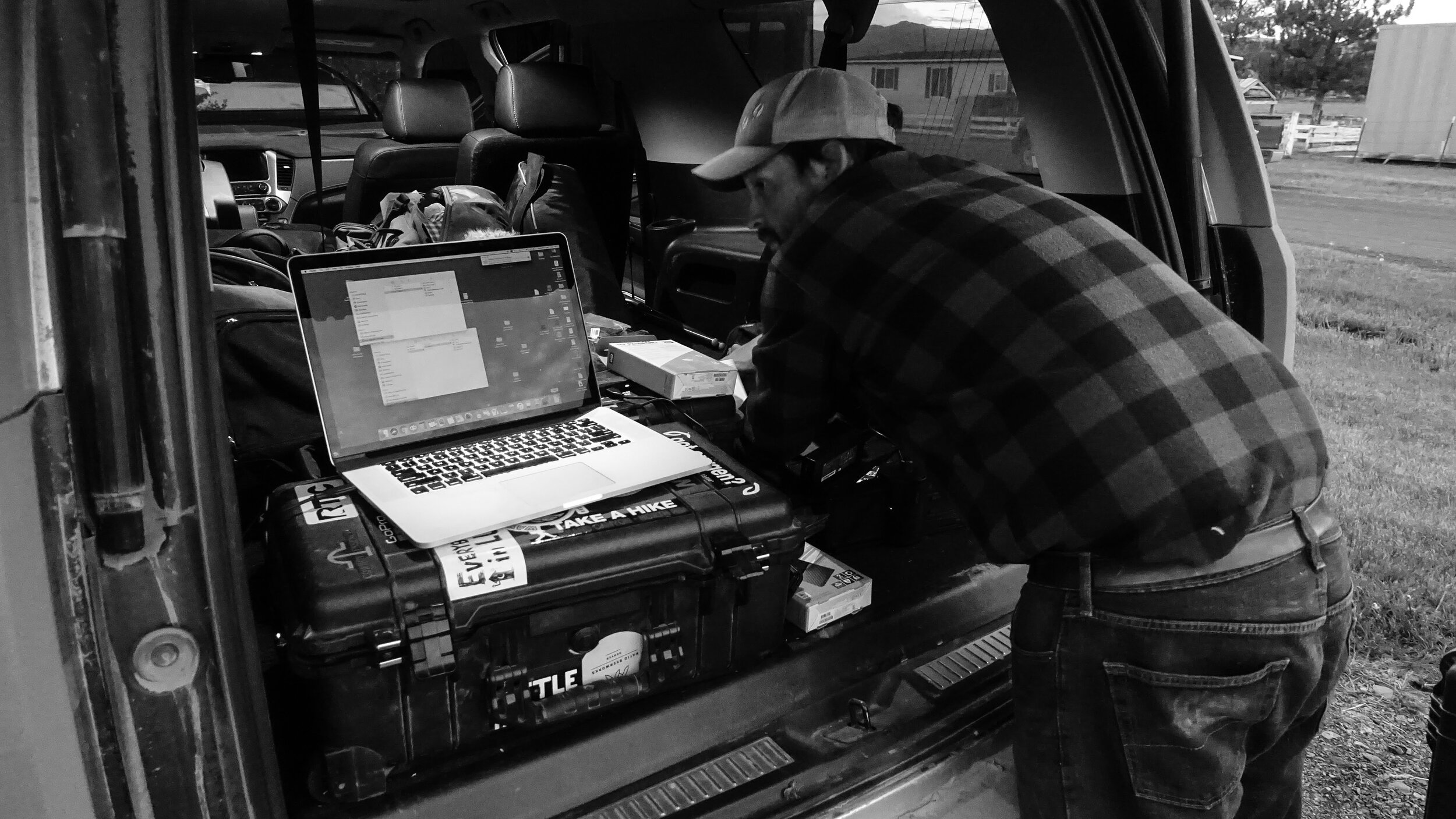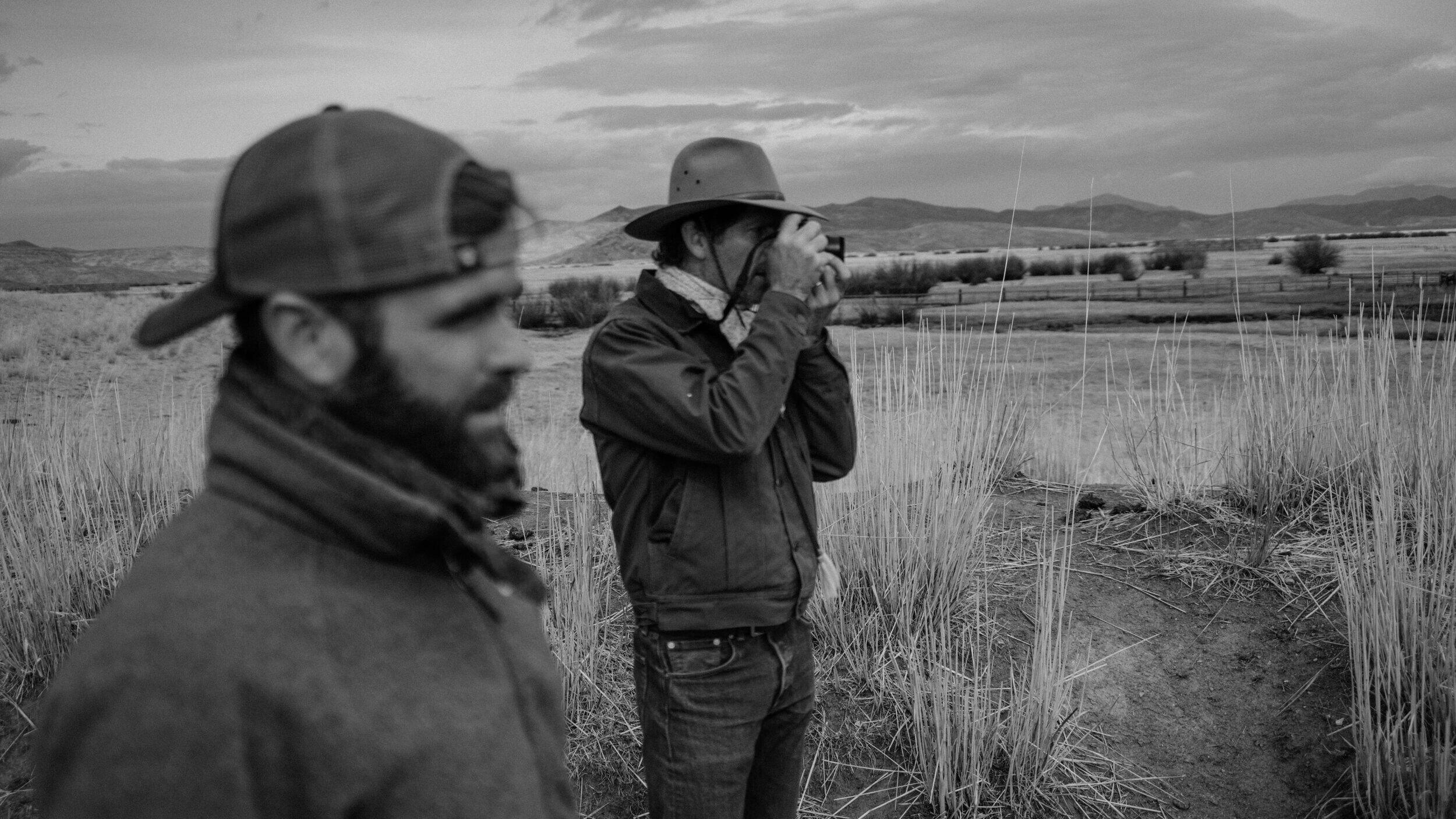COWBOYS is that rare documentary film impacting audiences not because it is timely, but because it is timeless.
Beyond its stunning cinematography, cowboys offers the deeper reflections of a well-crafted novel.
The feature-length documentary COWBOYS is a visually breathtaking film on lives spent alone, a stubborn, elusive philosophy put into images. The film has gained steam with festival audiences fascinated by average men and women chasing a mythic existence, the sudden danger, the essential humor, and above all the forbidding vastness of the American West.
teaser viewed over two million times
Austin Film Festival audience choice award (world premiere)
lone star film festival audience choice award
Through the wit and charm of a uniquely authentic cast of characters, COWBOYS details the yearly cycle of life and work on America’s largest cattle ranches - some more than one million acres and employing full crews of horseback cowboys.
But the directors have chosen not to pursue the familiar narrative of a glorified profession receding into a mythologized past. Instead, COWBOYS is immersed in the unvarnished reality of the contemporary West and is a deeper meditation on the nature of obsolescence.
Is this whole enterprise--men still riding horses to chase cows--the best way to put beef on the table? Doesn’t it make more sense to herd cattle with drones and satellite phones and autonomous vehicles? Turns out, that’s too expensive with tires and gas and satellite time, and it’s still cheaper to hire a cowboy than a tow truck. The film’s deepest reflections confront the obsolescence not of the institution, but of the individual.
“a meditation on the nature of obsolescence.”
Cowboying is tough, physical, athletic work, and cowboys inevitably get injured. They get old. This is, after all, the industry that coined the phrase “the last round-up.” Just as the retired actor misses the wings of the stage, or the old athlete misses the locker room, cowboys miss the smell of horse sweat and the vastness of open range. They miss the immense detail and diversity of a country that to the layperson appears, after five thousand square miles, monotonous.
But the most profound connection the film offers audiences may be evolutionary. Through the millennia images have percolated into our collective unconscious, and the intent of COWBOYS is to create on film a kind of archetypal hard drive. Most in the audience will be unfamiliar with the daily details of a 21st century working cowboy. But the images of a human and a horse, the thunderous vibrato of a herd on the move, the day’s morning light and the night’s utter darkness, the heat and the hard freeze, the close proximity to life and death . . . we carry these vestigial experiences within all of us.
We understand these images and these sounds, and through COWBOYS we gain a new perspective of the life our distant forebears must have led, teaming with animals, following herds, nursing the fire at night. The cumulative impact of COWBOYS is a kind of cinematic request - a request that we reflect on our own lives and place in the world, which can be so far removed from the raw, elemental existence the filmmakers have set before us.
It is the FILMMAKERS’ unique relationship with working cowboys that makes this film possible.
Bud Force is a commercial and documentary director/DP who specializes in cinematic non-fiction. Bud rode bulls and worked in agriculture through his early twenties until a catastrophic wreck in the arena ended his rodeo life and transitioned his career into the world of filmmaking. Today, Bud splits his time working on ranches and directing documentaries and brand films around the world.
John Langmore’s father, Bank Langmore, is a Western photographer whose 1975 book, The Cowboy, set the standard for authentic depiction of the modern working cowboy. John spent twelve summers of his youth working on large ranches across the West and recently completed a photo project on the working cowboy published by Twin Palms Publishers in 2018.
To produce COWBOYS, Force and Langmore formed 1922 Films with Creative Producer Felicitas Funke. “Feli” was born in Northern Germany and has spent decades studying and writing about the American West. In 2000, she published and wrote the iconic photo book, “Gathering Remnants - a Tribute to The Working Cowboy,” and currently serves as the associate publisher of "Big Life Magazine" in Ketchum, Idaho.
The Audience
COWBOYS has struck a nerve with both rural and urban audiences. The movie’s teaser went viral within hours of posting, garnering more than two million views to date. The Western crowds have embraced the film’s authenticity while urban audiences are fascinated by the first-hand perspective of a way of life most thought long extinct in contemporary America.
press & Reviews
Please click here
“A collision of the modern and the mythical.” - Matthew Monagle, The Austin Chronicle
“A must watch masterpiece.” - Jim Mundorf, Lonesome Lands . “Proud and wistful, heartbreaking and breathtaking; sometimes all at once.” - Elizabeth Dillow, Wyoming Tribune
production & BTS images




























